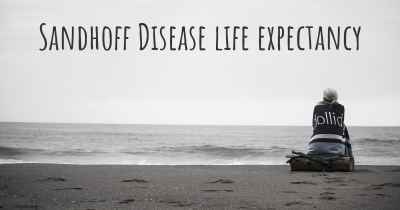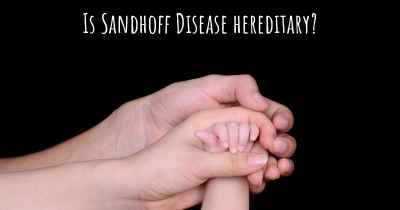Can people with Sandhoff Disease work? What kind of work can they perform?
See how people with experience in Sandhoff Disease give their opinion about whether people with Sandhoff Disease can work and what kind of jobs are more appropriated for people with Sandhoff Disease

Can people with Sandhoff Disease work?
Sandhoff Disease is a rare and severe genetic disorder that affects the central nervous system. It is a type of lysosomal storage disorder characterized by the absence or deficiency of a specific enzyme called hexosaminidase. This enzyme is responsible for breaking down certain fatty substances in the body, and its deficiency leads to the accumulation of these substances in the brain and other organs.
Due to the progressive nature of Sandhoff Disease, individuals affected by this condition often experience a decline in their physical and cognitive abilities over time. The symptoms can vary widely, but they typically include muscle weakness, loss of motor skills, seizures, intellectual disability, and impaired speech and hearing.
Given the debilitating nature of Sandhoff Disease, it is challenging for individuals with this condition to engage in traditional employment. The progressive nature of the disease and the associated physical and cognitive limitations make it difficult to perform tasks required for most jobs.
However, it is important to note that the abilities and limitations of individuals with Sandhoff Disease can vary significantly depending on the severity of the condition and the age of onset. Some individuals may retain certain functional abilities and cognitive skills for a longer period, allowing them to engage in limited forms of work or activities.
For individuals with milder forms of Sandhoff Disease or those in the early stages of the condition, certain types of work may be possible:
- Advocacy and Awareness: People with Sandhoff Disease can contribute to raising awareness about the condition and advocating for research, support, and resources for affected individuals and their families. They can participate in awareness campaigns, share their personal experiences, and engage in public speaking or writing to educate others about the disease.
- Peer Support: Individuals with Sandhoff Disease can provide support and guidance to others who are newly diagnosed or living with the condition. They can offer emotional support, share coping strategies, and provide valuable insights based on their own experiences.
- Volunteer Work: Depending on their abilities and limitations, individuals with Sandhoff Disease may be able to engage in volunteer work that aligns with their interests and capabilities. This could include activities such as assisting in administrative tasks, organizing events, or participating in community outreach programs.
- Artistic Pursuits: Some individuals with Sandhoff Disease may have a talent or interest in various forms of art, such as painting, music, or writing. They can explore and develop their artistic skills, which can serve as a creative outlet and potentially lead to opportunities for showcasing their work or collaborating with others.
It is crucial to emphasize that the ability to work or engage in specific activities greatly depends on the individual's unique circumstances, including the progression of the disease, their physical and cognitive abilities, and the availability of appropriate support and accommodations.
For individuals with more advanced stages of Sandhoff Disease or significant physical and cognitive impairments, the focus shifts towards providing comprehensive care, maximizing quality of life, and ensuring their comfort and well-being.
In conclusion, while individuals with Sandhoff Disease may face significant challenges in pursuing traditional employment due to the progressive nature of the condition and associated limitations, they can still contribute to society in meaningful ways. Whether through advocacy, peer support, volunteering, or artistic pursuits, individuals with Sandhoff Disease can make a positive impact and find fulfillment despite their condition.
Posted Feb 24, 2017 by Levi Christopher Lucero, Jr. 2185








